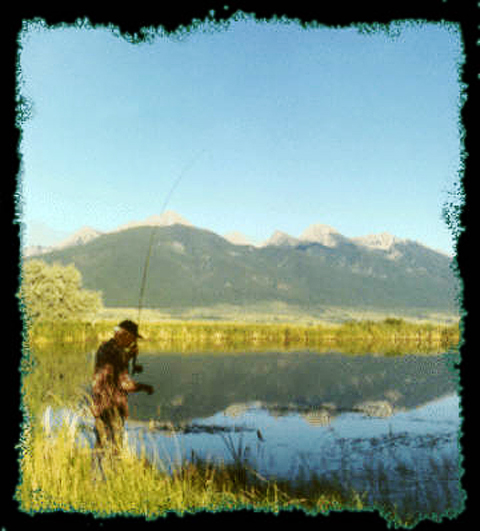
Wild Rivers Art

Ron Jenkins |
|||
The Dean of Montana Wildlife Artists,Ron has been described as a "fisherman's artist." He has fished almost every river in Montana and his paintings leave you thinking "That's where I would have cast too". Ron paints fine art as well as cover and story Illustrations for books and magazines. He prefers to paint outdoor subjects such as birds, fish, landscapes and an occasional abstract composition. As a fisherman and dedicated naturalist, Ron does most of his research in the field. In other words: "he would rather be fishing." Accuracy and attention to detail are the hallmarks of Ron's work. He possesses the unique ability to accurately depict the special relationship between wildlife and the environment. In the "Madison River" for example. fisherman and naturalists will appreciate how Ron has captured the stages of a frenzied salmon fly hatch, where massive Brown and Rainbow Trout are gorging on salmon fly nymphs and emerging adults. Insects lucky enough to temporarily escape the feeding frenzy are consumed by dive-bombing swallows. Ron's designs were chosen for the 1964-65 Federal Duck Stamp and he designed the 1980 Montana bird stamp. Ron's design for the 1993 rhode Island Trout Conservation Stamp won First of State. His art has appeared in Pennsylvania Angler, Montana outdoors, North Carolina Wildlife, New Mexico Wildlife, National Geographic, Montana fishing Guide, Readers Digest Books and many others. |
|||

Pete Ramberg
"Do you enhance your pictures?" I am asked that all the time.The word "enhance" has so many meanings, most of which are misused, that my simple answer is "Yes, they are all very much enhanced". When asked, "Do you use a computer to enhance your pictures?" again my answer is "Yes". From the moment a scene is imaged by the camera lens, to the transfer onto film, to the light the subject is photographed under, to the processing of the negative, to the digital scanning of the selected Image, to the printing on photographic paper or canvas, to the matting and framing of the finished print – each step is controlled by a computer of some sort. I’d like to think that I have a hand in the enhancing of the image too. I wait until the moment is right for photography of the subject and do my technical homework so that the image recorded is as true to the subject as I can make it. Another frequent question is "Did the scene look like the photograph you took?" There is no photon Earth that looks exactly like the scene it rendered, simply because light continually changes how a subject looks. In addition, each step in the photographic process "enhances"the original scene. So, the end result is my interpretation as an artist of the original subject – as is any art form. Have I used anything artificial in the whole process? Yes, each step has some inherent artificial quality embedded in it. Film and digital imaging are as artificial to the photographer as paint and brush are to the painter. The human eye has abilities that far exceed any photographic or printing process. Its tonal range and ability to render color are so much greater than film or digital imaging. Digital and traditional techniques can only help close the gap between what our eyes see and what is hung on a wall. So, give Mother Nature and our eyes and light much more of the credit – and us nature photographers much less…
Pete Ramberg